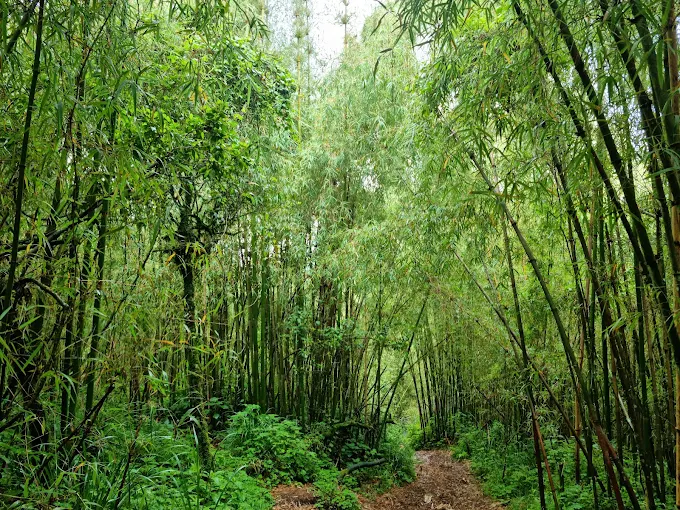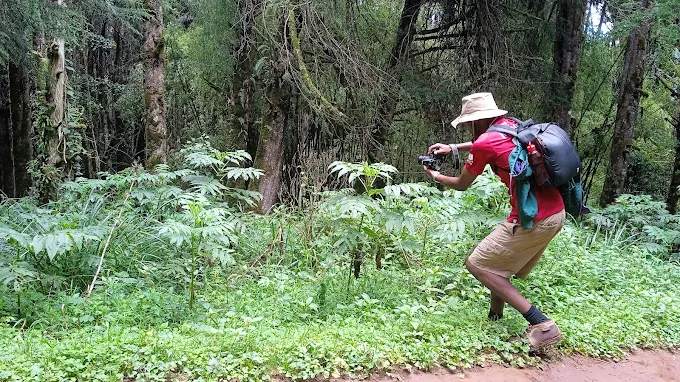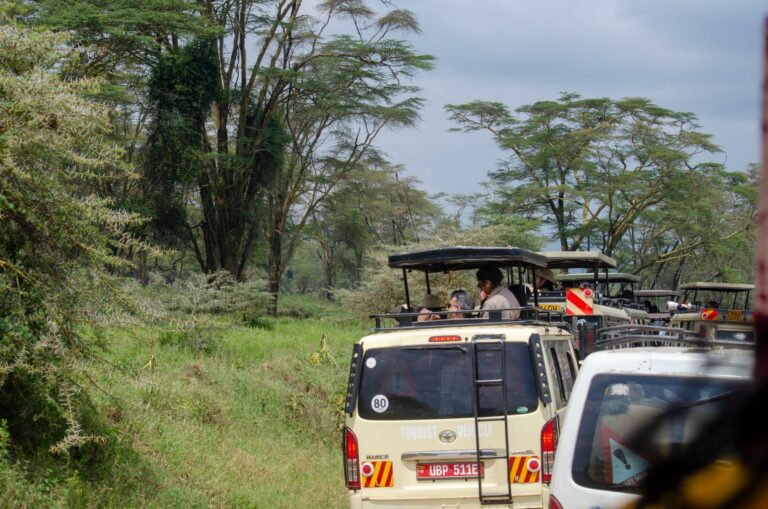Tucked away in the southern reaches of the Aberdare Ranges, the Elephant Hill hike is a must-do for hiking enthusiasts looking for a physical challenge, dramatic landscapes, and crisp mountain air. Often used as a training ground for Mount Kenya and Kilimanjaro, this trail is not for the faint-hearted—but for those who take it on, it offers some of the most rewarding views in Kenya.
Whether you’re a solo trekker, part of a hiking group, or looking to test your limits on a weekend escape, Elephant Hill promises a thrilling adventure from start to summit.
Table of Contents
Elephant Hill Kenya Location
Elephant Hill is located within the Aberdare National Park, about 90 kilometers north of Nairobi, in Nyandarua County, Central Kenya. The trail starts near the Njabini Forest Station, just past the small town of Njabini.
It is part of the southern Aberdares, a lesser-known but breathtaking range known for bamboo forests, moorlands, and alpine flora.
Elephant Hill Distance from Nairobi
From Nairobi, the drive to the trailhead takes approximately 2.5 to 3 hours depending on traffic and road conditions. The route follows the Nairobi–Naivasha–Engineer road, making it accessible for day trips or weekend hikes.
Directions to Elephant Hill Trailhead:
- Take the A104 highway towards Naivasha.
- Turn off at Flyover or Njabini toward Engineer town.
- Proceed to Njabini Forest Gate (also called the Elephant Hill Gate).
- Park entry fees and registration are done here through the Kenya Forest Service (KFS).
Google Maps will usually recognize “Elephant Hill Trailhead” once you’re near Njabini.
Elephant Hill Hiking Distance and Elevation
- Trail Distance: Approx. 20 kilometers round trip (10 km ascent, 10 km descent)
- Elevation Gain: From 2,600 meters at the gate to 3,685 meters at the summit
- Elephant Hill Elevation: 3,685 meters (12,089 feet) above sea level
This steep elevation gain over a relatively short distance makes it a physically intense but very satisfying climb. You’ll pass through Montane forest, bamboo zone, moorlands, and finally the rocky alpine zone near the peak.
🏞️ Ready to Conquer New Heights? 🏔️
🚀 Join Joe Photography and Safaris for thrilling hiking adventures across Kenya! Meet new friends, explore breathtaking trails, and create unforgettable memories. 🌿✨
🎒 Join Our Hiking WhatsApp Group 🚀Hikes. Adventures. Friendships. Memories. 🌍
Elephant Hill Hike Difficulty
The Elephant Hill hike is rated as challenging. While it doesn’t require technical climbing skills, the trail is steep, long, and can be slippery or muddy—especially during the rainy season.
Expect:
- 6 to 8 hours of hiking
- Thin air near the summit (watch for signs of altitude sickness)
- Slippery bamboo sections
- Open, windy moorlands above the tree line
It’s recommended for physically fit individuals, and those preparing for higher altitude treks. If you’re new to hiking, it’s best to pace yourself and go with an experienced group or guide.
What to Expect on the Trail – Elephant Hill Hike
The Elephant Hill hike is often described as a mini-mountain expedition, offering a taste of everything from dense forest to alpine moorlands—all in one day. The journey to the summit unfolds in four distinct ecological zones, each with its own challenges, beauty, and surprises. If you’re planning to tackle this trail, here’s a deeper look at what awaits you:
1. Montane Forest Zone – The Calm Before the Climb
Your hike begins at the Njabini Forest Gate, a quiet and lush entrance nestled beneath towering indigenous trees. This section of the trail is shaded, cool, and relatively gentle compared to what’s ahead. The path is often damp underfoot and crisscrossed by small roots, making it important to watch your footing.
Expect to be surrounded by the symphony of forest birds, rustling leaves, and the distant trickle of small forest streams. You might spot colobus monkeys in the trees or even the occasional bushbuck darting through the foliage. This is a great warm-up zone that gives your body time to adjust before the serious climb begins.
Highlights:
- Birdsong and wildlife sightings
- Rich biodiversity and native flora
- Soft, forested terrain ideal for a gentle start
2. Bamboo Zone – The Green Wall
As you climb higher, the forest gradually gives way to the bamboo zone—arguably the most challenging part of the hike. The trail becomes narrower, steeper, and more slippery, especially after rainfall. The bamboo shoots form a towering canopy overhead, creating a cool, quiet tunnel where even the breeze seems to hold its breath.

This is where most hikers feel the burn, as the incline increases sharply and the footing becomes more difficult. The soil can get muddy, and hikers often rely on trekking poles and occasional tree branches to support their ascent.
Despite the difficulty, the bamboo zone is one of the most atmospheric and beautiful sections of the trail. The filtered light through the green canopy creates a magical ambiance, and if you pause to catch your breath, you might catch sight of rare birds or fresh animal tracks.
Pro Tips:
- Wear shoes with strong grip
- Take short, steady breaks
- Hydrate and pace yourself—it gets tougher before it gets easier
3. Moorland Zone – The Land of Endless Skies
As the bamboo thins out, you’ll step into an entirely different world. The moorland zone opens up into sweeping highland plains covered in tussock grasses, lobelia, and delicate wildflowers. Here, the air gets cooler and thinner, but the reward is vast open views in every direction.
With the Aberdare ridgelines stretching on either side and mist curling along the hills, this section feels almost otherworldly. You’ll want to stop frequently—not just to rest, but to take in the stunning photo opportunities.

Bird watchers will also love this zone, as it’s common to spot sunbirds, augur buzzards, and even the occasional eagle circling overhead. On clear days, the visibility stretches for miles, and you may glimpse Mount Kenya’s icy peaks shimmering in the distance.
Best for:
- Scenic photography
- Wildlife and bird spotting
- Feeling like you’re truly “above the clouds”
4. The Summit – A View Worth Every Step
At 3,685 meters above sea level, the Elephant Hill summit is a wide, rocky outcrop offering panoramic views across the Aberdares and beyond. Reaching the top feels like a true victory, especially after conquering the bamboo zone and wind-swept moorlands.
At the summit, you’ll often find fellow hikers catching their breath, sharing snacks, and taking group photos. If the weather is clear, you’ll see:
- Mount Kenya to the northeast
- The Great Rift Valley stretching out below
- Layers of rolling hills disappearing into the horizon
The summit rock also provides a perfect platform for panoramic photos, rest breaks, and quiet reflection. You might feel tired, but the crisp air and stunning views will make it all worthwhile.
Don’t rush the descent—enjoy the scenery on the way down, and celebrate your achievement. After all, you’ve just tackled one of Kenya’s most demanding one-day hikes.
Summary of the Trail Experience:
| Trail Zone | Key Features | Experience Level |
| Montane Forest | Shady, flat to moderate trail, birdsong | Beginner friendly |
| Bamboo Zone | Steep, slippery, enclosed by bamboo | Challenging |
| Moorland Zone | Open views, high altitude, beautiful flora | Moderate to tough |
| The Summit | 360-degree views, rocky outcrop, cold winds | Rewarding |
If you’re ready to take on this hike, Joe Photography and Safaris will guide you every step of the way—from transport and permits to trail photos and summit celebrations. Whether you’re hiking solo or with a group, Elephant Hill promises a journey you’ll never forget.
Elephant Hill Resort and Accommodation Nearby
While there isn’t a resort directly on the trail, several great accommodations are available near Njabini and Kinangop. One notable spot is the Elephant Hill Resort, a cozy, hiker-friendly lodge located about 15–20 minutes from the trailhead. It offers warm showers, comfortable beds, hot meals, and an ideal base for hikers planning an overnight stay.
Other options include:
- Aberdare Cottages & Fishing Lodge
- Panari Resort Nyahururu
- Homestays and Airbnb cottages in Engineer or Njabini towns
Camping near the forest gate is also an option for experienced outdoor adventurers.
What to Pack for the Elephant Hill Hike
Because of the changing elevation and unpredictable weather, proper gear is essential:
- Hiking boots with ankle support
- Trekking poles (recommended)
- Layered clothing (it gets cold and windy at higher altitudes)
- Waterproof jacket or poncho
- 2–3 liters of drinking water
- High-energy snacks and packed lunch
- Sunscreen, hat, and sunglasses
- Gloves and thermal wear (if hiking early morning)
Tips for First-Time Hikers at Elephant Hill
- Start Early: Most groups begin the hike by 7:00 AM to beat the afternoon mist and winds.
- Travel in Groups: For safety and morale, it’s better to hike with a team.
- Hire a Guide: Available at the gate, especially recommended for solo hikers.
- Watch the Weather: Avoid hiking during heavy rain—trails can become dangerously slippery.
- Fitness First: Do some endurance training in the weeks before the hike to prepare for steep elevation gain.
Why Choose Joe Photography and Safaris for Your Elephant Hill Hike?
At Joe Photography and Safaris, we specialize in organizing guided hikes to Elephant Hill and other mountain trails across Kenya. When you hike with us, you enjoy:
- Reliable transport from Nairobi or Nakuru
- Experienced trail guides
- Professional photography to capture your summit moments
- First-aid support
- Water, snacks, and logistical coordination
- Access to our exclusive WhatsApp hiking group for updates and community
Whether you’re hiking solo or with a group, we make your experience safe, fun, and unforgettable.
FAQs on Elephant Hill Hike
How long is the Elephant Hill hike?
The Elephant Hill hike is approximately 20 kilometers round trip—10 km up to the summit and 10 km back down. The average hike duration is 6 to 8 hours, depending on pace, fitness level, and weather conditions.
Where is Elephant Hill located in Kenya?
Elephant Hill is located on the southern edge of the Aberdare Ranges, in Nyandarua County, Central Kenya. The trail begins at Njabini Forest Station, which is about a 2.5 to 3-hour drive from Nairobi via Naivasha or Engineer town.
Is the Elephant Hill hike difficult?
Yes, the Elephant Hill hike is considered moderately difficult to challenging. It involves steep ascents through bamboo forests and high-altitude moorlands. The hike is best suited for hikers with good physical fitness or those training for tougher climbs like Mt Kenya or Mt Kilimanjaro.
What should I carry for the Elephant Hill hike?
Hikers should carry:
Comfortable hiking boots with good grip
Trekking poles (recommended for bamboo zone)
At least 2 liters of water
Snacks or packed lunch
Layered clothing for temperature changes
Waterproof jacket or poncho
Hat, sunscreen, and gloves (optional in cold months)
A camera or smartphone is also great for the scenic moorland and summit views.
Are there any fees to hike Elephant Hill?
Yes. Kenya Forest Service (KFS) charges a small entry fee at the Njabini Gate:
Kenyan Citizens: approx. Ksh 300
Residents: approx. Ksh 600–1,000
Non-Residents: approx. USD 20+
Additional costs may apply for transport, guiding, or photography services—especially if booking with a tour provider like Joe Photography and Safaris.



